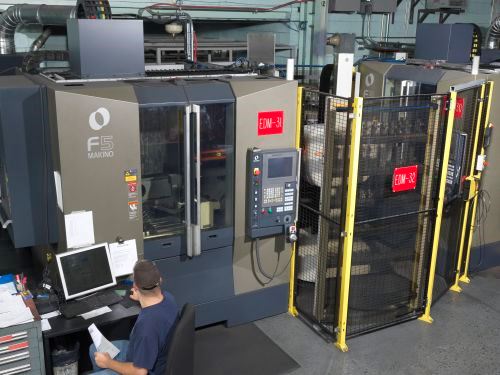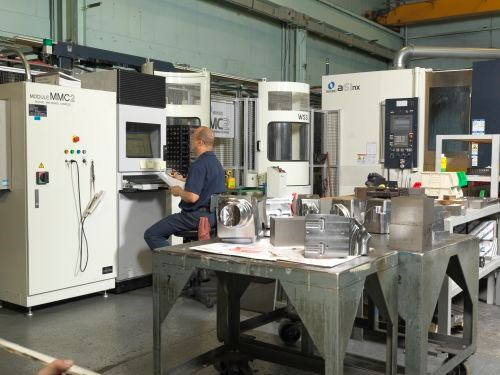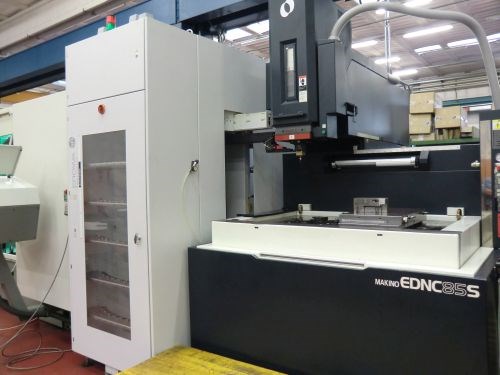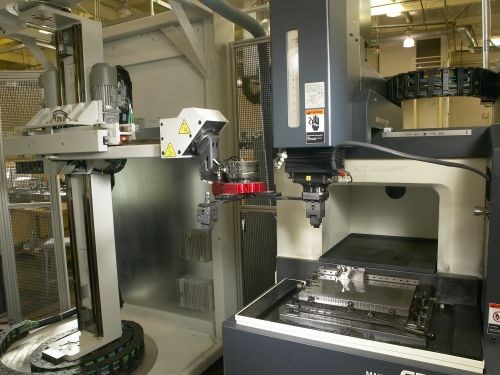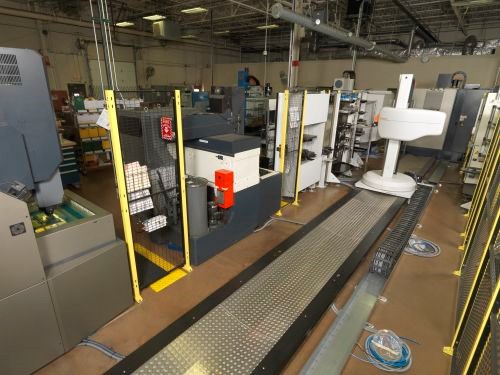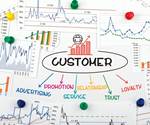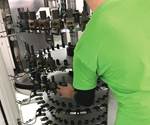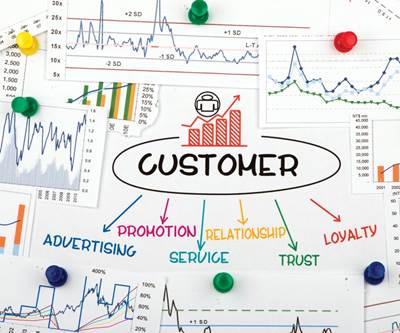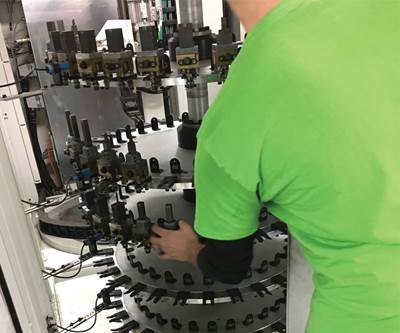Invest Now in Die/Mold Automation to Meet Growing Customer Demand
In today’s highly competitive global marketplace, there are two types of mold shop owners, (1) those who invest in new technology and automation to create innovative ways to meet customer demands for shorter lead times, more complex designs and tighter tolerances and (2) those show don’t invest and quickly fall behind other North American shops and low-cost, offshore manufacturers. Here is a case study from Makino about one mold builder who fits nicely into type number one.
Business is booming across the aerospace, automotive and white goods industries. Demand for tools to produce their products is expected to outstrip North American capacity for at least another 24 months. Orders for dies and molds are valued at $14 billion this year, says Laurie Harbour, president and CEO of Harbour Results in Southfield, Michigan, an industry analyst and manufacturing consultant. In an average year, that estimate would be about $10 billion.
“Now is the time to be thinking about expanding,” Harbour says. “Understand that demand for tools is at an unprecedented level right now. Shops are working at more than 100 percent of capacity. They’re outsourcing like crazy. They’re running 70-hour weeks. And, frankly, a lot of the industry has turned to China as a relief valve because capacity is too tight here.”
Only owners of the aforementioned first group of die/mold shops will be positioned to prosper through this period of rapid growth and beyond. They will add the advanced machining centers and manufacturing cells required to make dies and molds for today’s products and speed up delivery of more orders. This advancement will enable them to reduce or eliminate the cost advantage many overseas producers enjoy, Harbour says. Significantly, investment in machinery and software improves productivity by increasing utilization and operator efficiency. Likewise, shop owners can create solutions to the severe shortages of skilled labor that exist now and will only worsen as an aging workforce heads toward retirement.
“It’s becoming increasingly important to meet some of these capacity demands because customers say to shop owners, ‘I need you to make more tools.’ The shop owners are saying, ‘Hey, we’re full.’ To meet these demands, small- and medium-size die/mold shops have got to be more efficient,” Harbour says. “So many owners of these shops are looking at new equipment and new forms of automation. They’re looking at new forms of software technology to help them drive efficiency.”
Six Trends Reshaping Your Business
Shaping the demand for greater capacity in today’s die/mold market are six key trends that will reward shop owners equipped to take advantage of them, including:
- Cars and trucks, household appliances and aircraft continue to become more complex. High-quality tools are required to produce tight tolerances and complex geometries.
- Manufacturing is now a high-mix, low-volume marketplace. Consumers expect more customization, so more models of products need to be produced.
- Automotive OEMs sell more trucks than cars. Trucks typically require more tools per vehicle to produce.
- Customers compress lead times. What once took 16 to 17 weeks now is expected in 10 weeks, says Wes Stephens, account manager at Industrial Molds in Rockford, Illinois. As many as 40 percent of Stephens’ customers request that their orders for molds be expedited.
- The lifecycle of products continues to grow shorter. In response, manufacturers more frequently require new tooling to produce their new product designs.
- Chronic shortages of skilled machinists and people interested in manufacturing jobs will continue. Looming retirements of veteran operators and shop owners compound this challenge.
These trends are altering the marketplace and, in response, shop owners should think about how they can meet the high demand for tools when at the same time less labor is available.
“There are just not as many toolmakers in North America as people think there are. Therefore, the focus needs to be on automation, on technology like programming software, and how shops can do things easier and faster in the machine without having a whole lot of interface from people, because they don’t have a massive group of people they can hire,” Harbour says.
What’s Holding Shops Back
Despite the positive forecasts for manufacturing growth, business expansion at die/mold shops can be limited when owners are reluctant to invest in machinery and technology. Many of them struggled during the recent recession and remain unconvinced the current boom in the automotive, aerospace and appliance markets will last.
“They’re risk adverse and aging. Owners who are in their 50s and 60s or older say, ‘What’s the point’ in investing in the business when they don’t plan to be around the shop for another 20 years,” Harbour says.
At shops already operating over capacity, owners say they do not have time to research new equipment and meet with representatives of machine tool suppliers. They’re too busy working to get existing orders out the door on time.
And always in the background is the influence of low-cost providers around the world. North American shop owners worry about adding the expense of new machinery and technology to their operations when they must go head to head with manufacturers in China and other countries with lower cost structures.
“Price competition is really significant,” Harbour says. “If companies are sitting here not doing things to make their businesses better, they don’t have anything that differentiates them from manufacturers in China. That’s why creative and innovative shops are thinking, ‘How can we be as efficient as possible here so we don’t lose business to low-cost manufacturers?’”
Automate to Transform Operations
Solutions that prepare die/mold shops to meet more of their customers’ demands can be found in investment in advanced mills and electrical discharge machines (EDM) along with automation technologies that load and unload workpieces, pallets and tooling.
Stephens tells the story about his apprenticeship experience in the suburbs of Chicago, where he had originally learned the trade from another mold shop. Prior to 2008, there had been eight local die/mold shops located in that suburban area. Today, due to the recession, unrelenting overseas competition, and an aging base of owners who didn’t have succession plans, most of those shops have closed. Stephens keenly observed this trend, and took it as a lesson for the future. In 2012, he moved to Rockford to take on a job at Industrial Molds, a designer and builder of molds for thermoplastics, thermoset, die cast and insert precision applications. It was here that Stephens began to see how die/mold shops can not only survive, but thrive in the face of competition.
“The company started automating in 2004. It was an 80-man shop at the time. Now it’s a 50-man shop. It’s challenging to get new people in, but the automation equipment we invested in enables us to run 24/7, day and night shifts,” Stephens says.
Purchasing advanced machine tools and automation systems is only the first step. To optimize that investment, Industrial Molds changed its processes, tooling and fixturing. Engineers and operators focus on getting more spindle time, so measurements and workholding are carefully planned and completed outside of the machines. Similar operations are grouped in manufacturing cells to avoid causing bottlenecks when, for example, mills cutting carbon electrodes run faster than the EDMs which use electrodes produced by the mills.
“The new equipment is just one piece in the die/mold shop’s process and the owner needs to embrace the idea that this piece of equipment may require him to change his programming techniques, tooling, operator skill and even shop temperature control,” says Andre Ey, vice president of die/mold technologies at Makino. “The performance of the equipment may eliminate steps of the current processes and thereby require redeployment of personnel to other operations.”
Three Steps for Owners
Each die/mold shop is unique, so there’s no universal solution to recommend that sets these businesses up for success in dealing with changes imposed on them by the six major trends transforming the market today. However, there are actions each shop owner should consider, including:
- Implementing basic levels of automation by fully using automatic tool changers, pallet changers and advanced control features to optimize utilization, improve cycle times and increase opportunities for unattended operation.
- Investing in advanced automation systems that organize machines and processes into highly efficient manufacturing cells.
- Restarting or launching an apprenticeship program through local high schools or community/technical colleges to recruit and train machinists to fill specialized mold-making roles.
“Machine tool principles have not really evolved in the past 40 years. What has evolved are the levels of accuracy and reliability. This enables today’s users to rely less and less on human adjustments and instead rely on the machine performance,” Ey says. “The advancements in accuracy and reliability allow for automation and lights-out, unattended manufacturing, therefore increasing utilization.”
Advanced machine control technologies make it possible for operators of all skill levels to become more productive and improve quality. Coupled with automation hardware and software, these technologies enable die/mold shops to increase capacity without adding labor. Machinists are freed up to handle tasks at multiple machines, load work pieces and perform maintenance.
Stephens argues that investing in manufacturing technology and workforce development are smart moves, even for older owners who may be considering selling their die/mold shops.
“The business becomes more valuable by increasing its capacity and because you get talent that’s interested in newer and better equipment,” Stephens says. “Lack of investment means the technology will pass you by and you’ll become non-competitive.”
How to Get Started
Die/mold customers want to be first to market, so they push shops to produce their tools quicker and to deliver them faster. This demand for shorter lead times — and increased capacity across automotive, aerospace and consumer white goods segments — is expected to remain high for another two years.
Even when demand levels off, shops can expect to remain busy but with order volume “that will be more normal and manageable, and not as painful as it is right now,” Harbour says.
Some shop owners may decide to wait to see what happens to demand before considering whether to invest in new machines and automation. Harbor and Stephens believe that’s too late. Opportunities exist to grow now while also preparing the business to continue to meet customer demands with a smaller workforce into the future.
Harbor and Stephens encourage shop owners to visit other companies to see automated die and mold making in operation. Ey suggests owners talk with experienced application and engineering services providers to fully understand current processes and customer demands. This analysis will help shop owners choose the most-appropriate machine tool and automation options.
“Competing in any market is never a state of equilibrium. Competition requires continuous change,” Ey says. “If a shop owner is embracing change, it is not really a matter of pain but a matter of understanding how the impact of new equipment and automation systems can enable the die/mold shop to perform up to its customers’ expectations.”
Related Content
How to Improve Your Current Efficiency Rate
An alternative approach to taking on more EDM-intensive work when technology and personnel investment is not an option.
Read MoreMMT Chats: 4 Keys to a Successful Mold-Building Operation: Innovation, Transparency, Accessibility and Relationship
MoldMaking Technology Editorial Director Christina Fuges chats with Steve Michon, co-owner of Zero Tolerance in Clinton Township, Michigan, about the excitement of solving problems, the benefits of showing gratitude, the real struggle with delegation and the importance of staying on top of technology. This episode is brought to you by ISCAR with New Ideas for Machining Intelligently.
Read MoreEditorial Guidelines: Editorial Advisory Board
The Editorial Advisory Board of MoldMaking Technology is made up of authorities with expertise within their respective business, industry, technology and profession. Their role is to advise on timely issues, trends, advances in the field, offer editorial thought and direction, review and comment on specific articles and generally act as a sounding board and a conscience for the publication.
Read MoreTackling a Mold Designer Shortage
Survey findings reveal a shortage of skilled mold designers and engineers in the moldmaking community, calling for intervention through educational programs and exploration of training alternatives while seeking input from those who have addressed the issue successfully.
Read MoreRead Next
Forecasting and Balancing Business
Aligning operations, sales and business is essential to leveling out the effects of peaks and valleys.
Read MoreMachinery Additions Accelerate Shop’s Growth
Six new Makino machines and updated processes allowed this moldmaker to penetrate new markets.
Read MorePowerful Production
Automated cells with RFID technology facilitate a “productionized” approach that helps this shop make molds more accurately and efficiently.
Read More

